American stations need more of it, but overall, radio is full of creativity and innovation. What are the best practices and latest concepts from the world’s leading markets?
Internationally experienced UK radio consultants, programmers and talents shared insights from abroad for members of The Radio Academy. Now US radio faces the result of group consolidation and budget cuts, we can find inspiration in trendsetting markets like Europe and Australia. “If you’re not getting any complaints, you’re not pushing the boundaries enough.”
“Pinching a show from another group is
a quick way to have a win”
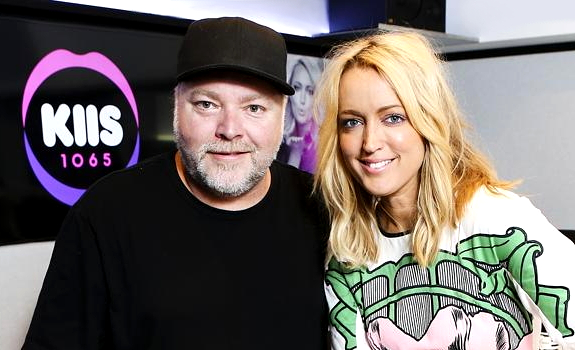
Clear Channel-owned Australian Radio Network station KIIS 1065 (formerly Mix 106.5) made a competitive move by ‘stealing’ the Kyle & Jackie O breakfast show from Southern Cross Austereo’s 2Day FM (photo: news.com.au)
Do your homework well
Phil Dowse wants to “force people to listen to and talk about radio” with attention-grabbing promotion, such as giving away 15 days of fame to people with no talent, no looks, and no hope – as opposed to shows like The X Factor. As a consultant, he’s learned to “shut up and listen” to learn about the market and station when he goes there for the first time. That was after suggesting a client in Prague to let their listeners relive their high school years – not knowing that back in the 80s, there were no high schools in the communist society. “Everyone looked at me like I was a complete idiot.” Some rules do apply in any radio market, such as the fact that “you need to be able to tell great stories if you want to be a great breakfast host”.
 Be careful with premises
Be careful with premises
“I am the least qualified person in the room.” That’s what Francis Currie admits during every first meeting with a new client. The former launch PD for Magic and Group PD of Heart gives advice to radio stations in Europe, Saudi Arabia and India. He’s used to ask endless questions as “it’s so easy to make false assumptions”. London cannot be compared to Manchester, therefore “imagine that difference amplified ten; twenty times in some of the countries”.
Take over complete shows
Currie thinks that morning shows first and foremost have to play the right songs. “You have to get the music right as a base level for being a competitive radio station these days.” Phil Dowse argues that in crowded markets like Sydney, where you have 3 CHR stations who basically all play the same songs, “a station will win based on what happens in between”. He also sees groups getting smart and pinch good people from the competition, “not just taking a content director, but an entire breakfast team plus producers”. He refers to KIIS 1065 (previously Mix 106.5) who took over The Kyle & Jackie O Show from rival 2Day FM. “It’s the best breakfast show in the world; better than the big ones in America.” The duo was #1 in Sydney for 53 surveys, and got 2Day a 10 share. “It does take time to make a breakfast show work. Pinching a show from another group is a quick way to have a win. KIIS went from a 3 to a 10 share in one book.”
“Radio needs to be a soap opera”

Radio consultant Phil Dowse sees Absolute Radio morning show host Christian O’Connell as a role model for on-air talents who successfully develop themselves into compelling radio personalities (photo: One Golden Square)
Move your audience emotionally
A holiday Down Under ended with a job offer from Southern Cross Austereo for producer Geoff Jein, who spent most of his time in the Aussie rules city Perth. “I never watched a minute of this sport that was so vital. Every breakfast show owns two players; one from each team, who are contracted to come in and tell about the team’s performance each week. And I’m producing a segment on a sport I’ve never watched… I’ve never felt as stupid as I did when I arrived in Perth.” Australian radio is also used to put content first. “My Austereo CHR station was playing 6 songs an hour; we had more talk than music – on a music breakfast show.” So-called shock radio is quite mainstream Down Under: “Your guidance is: if you’re not getting any complaints, you’re not pushing the boundaries enough.”
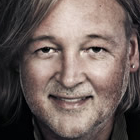 Feature entertaining phone bits
Feature entertaining phone bits
Phil Dowse sees that in many radio markets, prank calls are still working well. “They give the show a spark. People enjoy it. When they get to work, they talk about it, which brings royalty ratings and revenue.” Based on content research in 8 countries, Francis Currie confirms that in basically all of them “the phone pranks test the best. Of course, you can do them in a lame way. Or in a clever; entertaining way, and people will absolutely love them.”
Produce creative morning backsells
Dowse says that with Absolute Radio’s Christian O’Connell, the UK has “one of the best breakfast shows in the world. Five years ago, he didn’t like to talk about anything personal. Now, he talks about his wife; his kids, and you really bind to Christian’s life. Breakfast shows don’t win unless you get a relationship with the presenters. Once you care about them and begin to love them, you’re addicted to them. Radio needs to be a soap opera.” In terms of production, he finds that UK stations could make breakfast show promos a lot more exciting. “They’re just donuts; top and tail, and insert in the middle. The insert is taken out of context and it’s read so quickly that no one understands it.” He’s a fan of amplifying morning shows across the day through clever promos and social media activity, so it will become “a living and breathing thing”.
“Invest more in engaging
with those listeners”

Conditioning a new generation of media consumers to listen radio is a big challenge right now (photo: stock image)
Reflect today’s conversation topics
Geoff Jein (photo below) is now executive producer for the Heart 106.2 morning show. “I don’t know of an Australian breakfast show that doesn’t have a dedicated audio producer who comes in at 4 o’clock”, he says about the valuable things he’s seen Down Under. He also likes the philosophy that ‘if our audience is talking about it, we’re talking about it’, even if it’s TV that’s going to be on tonight. “Your ability to live the same life as your listeners is more important than losing a few listeners tonight.” Francis Currie warns for shows becoming templated. “You can’t churn out the same bit, at the same time, in the same way. People expect more. If you want to move your breakfast show on, find new ways of feeding yourself.” Phil Dowse sees that Australian producers and programmers show a great attitude: “Every program director is in the station at 7 o’clock; executive-producing the breakfast show.” Geoff Jein has two more examples:
[audio:http://www.radioiloveit.com/wp-content/uploads/geoff-jein-heart-106-2-radio-around-the-world-the-radio-academy-2014-01.mp3|titles=Geoff Jein about excellent radio producers]
Run innovative radio promotions
Australian radio is the home of promotions like Two Strangers and a Wedding and The Fugitive for a simple reason: overall, there is less competition than in other markets. “Until recently, we only had two radio groups. We can try more stuff – and if it doesn’t work, it doesn’t actually matter”, Phil Dowse explains. New concepts are being tested in small markets like Adelaide first; then taken to Melbourne, Sydney, and across the world.
Focus on long-term goals
Francis Currie sees consolidation (where less people do more) as a real challenge for the future of radio. “When you’re under pressure and there’s another conference call or meeting to go to, something has to get squeezed. Typically, the thing that’s not an immediate problem is the most important. Programming takes time to build; audiences take time to grow.” Stations may forget to do regular brainstorm, planning and coaching sessions. In one market where he works, 15-24-year-olds no longer use radio as first choice for audio entertainment (and prefer a streaming service instead). In many countries, radio’s TSL under 15-24s has halved over the last 5 years. “Unless stations invest more in engaging with those listeners, they’ll not develop the radio [listening] habit. As an industry, we focus so much on the 25-44s and don’t pay attention to 15-24s, because they don’t have the buying power yet. There’s a big risk there.”
“The stronger you start the day,
the stronger you finish the day”
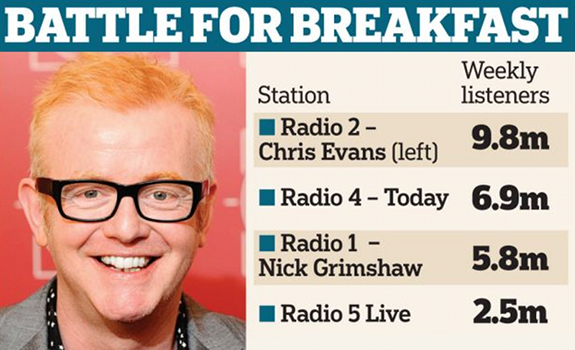
In some radio markets, the way of audience measurement makes midday programming the new premium ratings slot, while in many others a great morning show is still what drives a successful radio station (infographic: Daily Mail)
Make your station matter
Phil Dowse finds it hopeful that in America, “15-34 listenership is up in terms of cume” and “92 percent of people still use radio as their source of finding new music”, but doesn’t like the mood at radio conferences in the States. “They talk about competition with Spotify, Pandora and iHeart Radio. But they really need to listen to their own product. Because, you know what? It sucks! To continue to thrive, it does come back to content.” His impression is that local shows work better than syndicated ones, and that even though Ryan Seacrest is an exception, his show used to be better. “It’s actually not a show anymore; they just chop stuff together.” He does believe in syndicated drivetime, like Hamish & Andy in Australia, as drivetime is less topical; more entertainment. During commutes from home to Heathrow airport, Francis Currie often listens to Heart. “I heard my local breakfast show do a travel report at 10 to 10. I then had Toby Anstis update me 25 minutes later. The quality of the networking is world class; most people cannot spot the joint.”
 Program towards ratings methodology
Program towards ratings methodology
Session host Paul Hayes, who was a presenter at stations in the Middle East and North America, learned in Canada that you should focus on more than just the morning show if you are in a PPM market. The reason is that PPM panelists may not put their meter on during the hectic morning routine before getting to work. “They’ve found that the breakfast show was not the king; it was the midday show. It affected the whole dynamic…”
Create more listening occasions
“The big discovery in PPM is that it’s almost impossible to make people listen longer [as] real life gets in the way”, Francis Currie shares. While teasing upcoming content works in any market, in a PPM world it’s even more effective to make people tune in again by making appointments: “Instead of saying: ‘later we’ll be talking to…’, they will say: ‘at 10 past 8 we’ll be talking to…’. It’s all about driving up the number of listening occasions.” In some markets, TSL might not be important, while the total listenership (cume or reach) is. In the UK, RAJAR numbers depend on market share (how many people listen for how long). Currie’s advice in this case is to “play the right songs, talk about things that people care about in an entertaining way, and then things like teasing.” Phil Dowse adds that “the stronger you start the day, the stronger you finish the day. Workday stations, like the Smooths of this world that don’t have a great breakfast show, tend not to have a winning share in most markets.”
“The key to being a good radio presenter is
bringing in skills from everywhere”
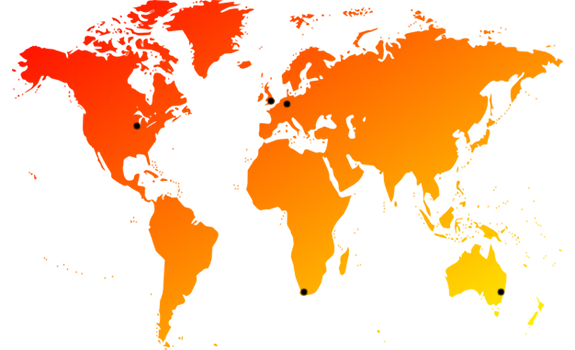
Working in trend-setting markets overseas can open a new career perspective (image: stock image / Thomas Giger)
Analyze long-term content performance
“One of the great things of PPM is that over time, you can isolate which individual commercial is turning people off”, Francis Currie says about electronice audience measurement in markets where broadcasters sell GRPs – the amount of people that hear the message. “If somebody turns off on the second commercial, the advertiser who had the third, forth or fifth commercial in the break, has to get that commercial replayed because listeners didn’t hear it.” He says it’s the same with benchmarks. “Over time, you can overlay the same time on different days with the same content, and work out which bits spike the audience up and down.” Paul Hayes learned in Canada that (in PPM markets) interviews basically don’t work. “Jennifer Lopez; whoever it is, it doesn’t matter if it’s not interesting and exciting and compelling.”
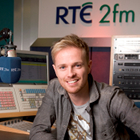 Keep your interviews interesting
Keep your interviews interesting
Phil Dowse reveals that when Kyle & Jackie O prepare celebrity interviews, they’ll make sure that “every third question is a really out-there question, designed to get a different response”. Another example he mentions, is Nicky Byrne. The former Westlife singer is now a midday presenter on Ireland’s RTE 2fm, and knows many of his interviewees. He makes an effort to come up with original questions. “It’s unbelievable, the stuff that he gets.”
Visit radio stations abroad
Gaining international experience can be good for your radio career. Geoff Jein advises to not just send one email and a demo, but to actually book a ticket and visit radio people you already know a bit. “I didn’t meet anybody on holiday that I hadn’t already spoken with on the phone or by email several times before. It was purely the fact that I sat there in the office that made them go: we could use you here.” He and his family (who moved along) came back recently as the age when children start going to school is significantly later Down Under, and it was a question of going back after 6 years or now. But he still tunes in late at night to listen: “I still passionately love Australian radio. I think Craig Bruce is one of the best programmers I’ve ever met, and I learned a lot. The key to being a good radio presenter is bringing in skills from everywhere; you bring more methods of working to the table.”
“American radio was the best”

According to Phil Dowse, Chicago’s 101.9 fm THE MIX is one of the few radio stations in the US that are still worthwhile to follow – especially for the compelling Eric & Kathy Morning Show (photo: Hubbard Broadcasting)
Research your potential employer
Francis Currie’s advice for radio people with foreign ambitions is to learn about the local market first. An American presenter once contacted him, just saying: I want to work in Europe. “He hadn’t considered that Europe is not the United States of Europe and we don’t speak a common language.” Currie also witnessed a classic mistake in his own country: “I’ve done job interviews in the UK where people hadn’t listened to the station. My first question is: when did you listen; what did you hear; what did you think of it? Make sure that you know enough to have an informed opinion. And don’t write ‘Dear sir or madam’. If you can’t work out who’s doing the hiring & firing, you’re not the right person for the job!”
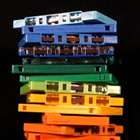 Dare to be colorful
Dare to be colorful
Earshot Creative’s Steve Martin is asking why so many stations hire American and British consultants, even though US (and UK) radio not always become more innovative in this time of consolidation. “Good question. Historically, if you go back to the 80s and 90s, American radio was the best”, Phil Dowse recalls. “I remember going to the States, armed with cassettes; taping every station I could find; taking it all back and pinching all new ideas.”
Focus on compelling interaction
In his opinion, that has changed: “If you look at American radio now, it pretty much is a breakfast show and lots of music across the day.” He feels like today’s best experts come from places like Europe, Asia, South Africa and Australia. “American consultants are really sad old men, and if you read some of the websites who interview them, honestly, they haven’t had a freaking idea since Reagan was in power. Someone from Clear Channel admitted recently that there’s about 5 decent radio stations in America.” Dowse’s own list includes Z100 and KIIS FM, but also the relatively unknown 101.9 fm THE MIX (WTMX) in Chicago. “They play two songs in the entire breakfast show – and it’s a Hot AC, aiming 25-44 female. But the compelling content is unbelievable. They do up to nine phone topics per show. Those aside, there are not many great radio stations in the States.”
“If you put on a celebrity,
you do get the headlines”
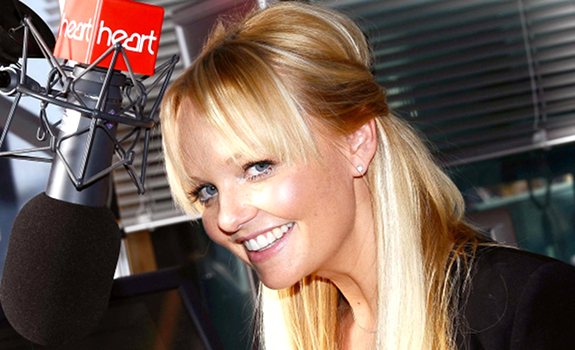
A beloved celebrity with broadcasting skills or talent can be a great asset for a radio station (photo: Global Radio)
Build a broad resumé
Francis Currie thinks that European stations look at the UK (and especially London) because they have the BBC and exciting brands. “Some of the work that’s been happening on the imaging side, marketing side or even networking side, is world class.” He also feels that UK consultants usually “have a deep reservoir of experience” in local, major market and national radio, and that “a lot of Europeans tolerate Brits better than Americans”. Antena Zagreb, the biggest commercial station in Croatia, launched a new channel in June 2014 – the first CHR in a capital full of different shades of AC. “We launched a hot, Rhythmic CHR. We’ve taken a lot of learning from Scandinavia, the UK, Australia and America [and] did a big research project to find the right hole for it.” He sees the competition respond by adapting and repositioning. “We’ve effectively thrown a stone in the middle of the pond.” Phil Dowse agrees that Eastern Europe is an amazing place for radio – mentioning Radio ZU in Romania as an “incredible” CHR station – and considers South Africa to be one of the most vibrant emerging radio markets right now.
 Leverage every audience KPI
Leverage every audience KPI
Currie and Dowse both think that a radio station’s success can be measured in more ways that just the ratings. In some markets, brands deliberately don’t participate in official ratings because their advertiser’s campaigns pay off for both parties and they don’t wish to communicate the numbers. More and more stations include stats of social media posts or even incoming listener calls as (additional) Key Performance Indicators in sales presentations.
Use celebrity star power
Someone in the audience is asking why so many stations tend to put celebrities on the air. Francis Currie explains that a celebrity (who already has fame and followers) can help to make a quick impact. “If you put on a celebrity, you do get the headlines. The problem is: if they’re not good at radio, you don’t get the audience. But when you get a good broadcaster who’s also a celebrity, you win!” He mentions Jamie Theakston, who already did a lot of radio before becoming a TV star, after which he was contracted for the morning show on Heart 106.2. “That really did accelerate the radio station’s growth.” In closing, Geoff Jein quotes a program director he’s been working with, who used to say: “I can teach a great personality how to do radio; I can’t reach a great radio broadcaster how to have a personality.”

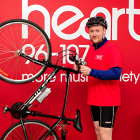




Radio is 98 percent talent, and 2 percent effort and qualifications.
I would like to know if it’s possible to broadcast via my Android… Maybe with an app, if there is one that can logon through their phones and live stream from my Android.
We have opened a community radio station at Nkandla, KwaZulu-Natal province in South Africa. Our presenters are so good, and they work very hard in improving the radio station performance. The challenge that we have is how to ensure that these people do get proper trainings?
Hi Randy, sounds like a very broad format. The fact that all artists are indie or unsigned is the only common thing :-). Assuming you have enough titles in each music category, what do you think of creating several different streams, based on the same database? You can still have 1 broad ‘surprise channel’ where you play anything back-to-back, but also offer 3 additional streams: 1 for Country, 1 for Pop-Rock, and 1 for EDM. Good luck with your station!
I run an online music station playing independent and unsigned artists from a mix of genres – mainly Rock, Pop-Rock, EDM, and a bit of Country thrown in. Would appreciate any advise on whether or not a mix station is a good idea – as long as I don’t mix in the EDM with the Rock & Pop-Rock.
As an expert who has launched, run and developed Asian radio in the UK and internationally, one thing I had to address is that there are about 3 million Asians in the UK. But this potential listenership is highly diverse. Cultural and faith issues are complicated by generational differences, providing unique challenges for all Asian radio stations in the country.
Sadly, most stations either mimic each other or have DJs rather than true broadcasters! Understanding the radio spectrum and delivery along with rigid program formats that Asian radio stations still need to adopt, and being Asian myself having run both English and Asian radio stations, we’ve still got a long way to go.
I’m afraid there are not enough true oldschool mentors or proper broadcast institutions that teach potential broadcasters right from wrong; rather than saying ‘the time is coming up to’ and actually giving the ‘real’ time…
Rant over; radio has a true and fantastic future, but it has to be managed and run with format discipline.